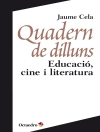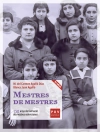This book discusses the relationships between mathematical creativity and mathematical giftedness. It gathers the results of a literature review comprising all papers addressing mathematical creativity and giftedness presented at the International Congress on Mathematical Education (ICME) conferences since 2000. How can mathematical creativity contribute to children’s balanced development? What are the characteristics of mathematical giftedness in early ages? What about these characteristics at university level? What teaching strategies can enhance creative learning? How can young children’s mathematical promise be preserved and cultivated, preparing them for a variety of professions? These are some of the questions addressed by this book.
The book offers, among others: analyses of substantial learning environments that promote creativity in mathematics lessons; discussions of a variety of strategies for posing and solving problems; investigations of students’ progress throughout their schooling; and examinations of technological tools and virtual resources meant to enhance learning with understanding. Multiple perspectives in the interdisciplinary fields of mathematical creativity and giftedness are developed to offer a springboard for further research. The theoretical and empirical studies included in the book offer a valuable resource for researchers, as well as for teachers of gifted students in specialized or inclusive settings, at various levels of education.
قائمة المحتويات
Introduction: Enhancing creative capacities in mathematically promising students. Challenges and Limits.- 1. Frameworks for Studying Mathematical Creativity and Giftedness.- Mathematical Creativity: Product, Process, Person and Press.- The Nature and Use of Theories on Giftedness in Mathematics Education Research: A Review on ICME Activities in the 21st Century.- High Talent and High Achievement in Mathematics – the Connection, the Difference and the Problems.- Mathematical Giftedness and Creativity in Primary Grades.- 2. Characteristics of Mathematically Gifted.- Characteristics of Mathematical Giftedness in Early Primary School Age.- Twice Exceptional Children – Mathematically Promising Children with Special Needs Marianne Nolte.- Mathematical Promise, Gender and Achievement Motivation. The Significance of Mathematical Self-Concept, Attributions and Interest in the Identification of Mathematically Promising Swedish Girls and Boys.- Cognitive Variety in Rich-Challenging Tasks.- 3. Teaching Strategies to Foster Creative Learning.- Encouraging Creativity in Heterogeneous Mathematics Classrooms.- Promoting Creativity with Procedural Tasks: Task Characteristics and Student Impact.- Flexibility of Pre-Services Teachers in Problem Posing in Different Environments.- A Gifted Student Learning Algebra by Means of Geometric Patterns Problems. Analysis of the Cognitive Demand.- 4. Tasks and Techniques to Enhance Creative Capacities.- About the Techniques of Gifted Students on Solving Challenging Mathematical Problems.- Repeated Participation at the Mathematical Olympiad: Does it Ensure the Students’ Progress in the Use of Problem-Solving Strategies?.- Development and Implementation of Creativity-in-Progress Rubric on Proving.- Technology-rich Environments for Mathematically Gifted: What is an Add-On Value?.- Commentary paper.












